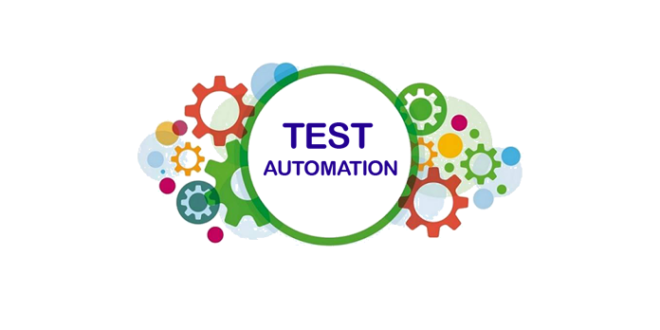Effective Automation Testing: Enhancing Software Reliability and Speed
Effective Automation Testing: Enhancing Software Reliability and Speed
Blog Article
From Handbook to Automated Testing: A Comprehensive Guide to Transitioning Efficiently and Properly
In the realm of software testing, the change from guidebook to automated procedures has ended up being a significantly important shift for companies looking for to enhance efficiency and accuracy in their screening techniques. The trip from handbook to automated testing is not without its obstacles, but when approached purposefully and with a clear strategy in mind, the benefits can be substantial.
Benefits of Automated Checking
Automated testing supplies countless advantages, improving effectiveness and accuracy in software program growth processes. Automated tests can be run simultaneously on multiple gadgets and operating systems, drastically speeding up the screening phase compared to hand-operated screening.
Furthermore, automated screening guarantees a greater level of accuracy in identifying flaws. Because automated tests follow predefined scripts, human mistake is minimized, resulting in even more reputable test results. Uniformity in testing is also improved, as automated examinations execute the exact same steps specifically each time they are run. This consistency is essential in guaranteeing that all functionalities of the software program are extensively checked, minimizing the probability of unnoticed bugs sliding through to production.
Picking the Right Tools

Firstly, evaluate your needs and purposes. Comprehend the scope of your task, the modern technologies involved, and the ability of your group. This evaluation will aid you identify the capabilities and functions you require in your screening tools.
Secondly, take into consideration the compatibility of the devices with your existing processes and systems. Seamless integration with your present software advancement lifecycle is vital to make sure a smooth transition to automation.
Furthermore, evaluate the scalability and flexibility of the tools. As your testing requires evolve, the devices ought to have the ability to adapt and accommodate adjustments properly.
Finally, factor in the support and area around the tools. Durable assistance and an active user neighborhood can supply useful resources and help when executing automated screening. By meticulously taking into consideration these facets, you can choose the right devices that straighten with your needs and set the stage for an effective shift to automated screening.
Composing Effective Test Scripts

When crafting examination manuscripts, it is important to consider the certain requirements of the software application being tested and make certain that the manuscripts attend to all essential performances. Detailed and clear naming conventions for examination scripts and test situations can boost readability and maintainability. Furthermore, incorporating error handling systems within the examination manuscripts can help in identifying and dealing with concerns promptly.
Moreover, arranging test scripts right into modular parts can enhance reusability and scalability, minimizing redundancy and enhancing performance in examination script maintenance. Regular testimonials and updates to evaluate scripts are vital to equal developing software application demands and functionalities. By complying with these concepts, testers can produce efficient and durable test manuscripts that contribute considerably to the success of automated screening processes.
Integrating Automation Into Workflows
Effective integration of automation tools into existing operations enhances procedures and improves productivity within software program growth cycles. When including automation right into operations, it is vital to identify repeated jobs that can be automated to conserve time and decrease human error. By perfectly incorporating automated testing devices like Selenium or Appium right into the software development lifecycle, groups can achieve faster feedback on code adjustments, resulting in quicker pest detection and resolution. This assimilation permits for continual testing throughout the growth process, making certain that any kind of problems are identified at an early stage, leading to greater software program quality. In addition, automation can be used to trigger tests immediately after each code commit, supplying immediate recognition and maximizing testers to concentrate on even more complicated circumstances. Proper integration of automation tools learn the facts here now needs cooperation in between growth, screening, and operations teams to establish a unified process that optimizes performance and performance in providing high-quality software application items.
Ensuring a Smooth Shift
Successfully transitioning to automated testing includes meticulous planning and mindful implementation to reduce disturbances and take full advantage of efficiency in the software program advancement procedure - automation testing. To ensure a smooth shift, it is necessary to start by conducting a detailed analysis of the present screening procedures and determining locations where automation can bring one of the most substantial benefits. Engaging with all stakeholders at an early stage at the same time, consisting of designers, testers, and job supervisors, is vital for amassing assistance and buy-in for the automation campaign
Interaction is crucial throughout this change stage. Clear interaction of the objectives, benefits, and expectations of automated testing helps to manage any resistance or issues that may arise. Additionally, providing ample training and resources for team participants to upskill in automation devices and strategies is crucial for making certain an effective shift.

Conclusion
Finally, transitioning from handbook to automated testing uses countless advantages, consisting of increased efficiency and dependability. By choosing the proper devices, composing reliable test scripts, and integrating automation seamlessly into process, organizations can make sure a effective and smooth change. It is important to accept automation as a beneficial property in software testing processes to improve overall quality and productivity.
In the realm of software screening, the change from handbook to automated processes has ended up being an increasingly important shift for organizations seeking to improve effectiveness and precision in their testing practices. Automated tests can be run simultaneously on multiple devices and running systems, drastically speeding up the screening stage contrasted to hands-on testing. Uniformity check my source in screening is likewise improved, as automated examinations implement the same steps specifically each time over here they are run.To guarantee the successful execution of chosen testing devices, the development of effective examination scripts plays a critical duty in verifying the functionality and efficiency of automated processes - automation testing. By adhering to these principles, testers can develop durable and effective examination scripts that add dramatically to the success of automated testing procedures
Report this page